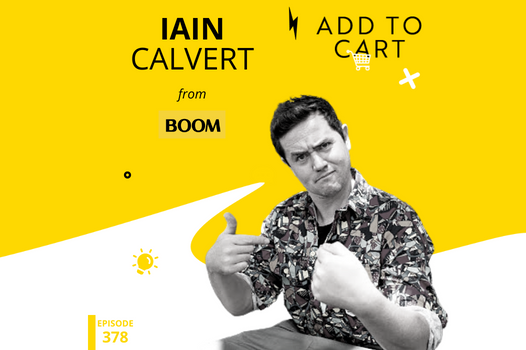In this episode of Add To Cart, we are joined by Iain Calvert, Ecommerce Consultant & Trainer at Boom Ecommerce
Iain is an ecommerce consultant and trainer with 20 years experience. Originally from the UK, Iain now concentrates on the Australian market and helps Aussie brands do ecom better. In today’s chat, Iain shares his nifty P&L hack for working out which areas of your business you should focus on, he gets real about about Google attribution and we hear his carefully curated shopping list for buying ecommerce companies.

“Google Ads is designed to say hey we’re doing really really well, if you ever dig into attribution it’s a guess at best, and that’s being polite.”
Iain Calvert
A different way to measure return on ad spend
“MER (Marketing Expenditure Ratio) is essentially a very similar way of measuring return on ad spend. So return on ad spend, spend one dollar, get five back. MER, the same example would be we’re spending 20% on advertising. Now, the thing I love about MER is that it makes you think about what you’re spending, not what you’re getting, which is more of a reality check. And it basically forces you to understand the P&L.
I think anybody that is spending any money for a business in any advertising needs to understand their P and L, so that they can then make good decisions. So let’s define how we’re defining MER. Everything that goes on marketing as a percentage of your net revenue. So net being take off your GST. And so you could be doing performance stuff, Google and Facebook, and then you could be doing branding stuff and the branding stuff doesn’t pay off for a while. So there’s basically a lag number. So you might spend loads on a branding campaign for six months of the year, but then you don’t see it until the last six months.
And that is literally the million dollar question, is when to spend and when to sort of like stop spending. What early signals are you starting to see that is your conversion rate starting to go up? What you can trust is money in, money out. And essentially it’s how ballsy you are to to spend for how long. That’s the best answer that I can give you because essentially it’s an absolute art. The trick is knowing when to push. For me, I push when I see conversion rate go up, so you push that little bit harder to then get that return.”
No such thing as an accurate source of truth
“This is a really fun exercise for anybody, right? Take all the sales that your backend system that reports the money, Take that number. Then go into Google and see how many sales it thinks it’s made, right? whatever attribution model it’s using, Then take Meta and see what it’s claiming. Then take Clavio, if you’re really going for it, take Pinterest, any channel that’s reporting and trying to get your money, add it together, you’re probably gonna be at about 250% of your sales.
It doesn’t add up, right? So after many years of trying to solve this, essentially just realised the simple approach is the best approach because you’re better to have really solid data that you can make a decision on.”
How to choose an ecommerce business to buy
“I set a selection criteria. So I call that a shopping list. It’s kind of like when you go to Woolies and you go food shopping. If you don’t take a shopping list, you come home with Nutella and donuts for dinner. So you just end up buying something that you love. So I’d end up buying a surf store.
Whereas what I did was I just wrote a criteria, what is a successful store? So I wrote, I want a conversion rate of one and a half percent or something like that, unless the average audit value was higher. Minimum average audit value of like $100 so I could afford to advertise on it based on that 50, 30, 20 ratio. I didn’t want any fad products like fidget spinners or anything like that. I didn’t want anything with multiple sizes, so like a fashion business. And I personally wanted to stay away from cosmetics because it’s just super, super competitive.
And so actually I started saying things that I wanted and things that I didn’t want. Once you then have that criteria and you start filtering down, if you make a regular habit of checking, then there’s likely that more will come up.”
Links from the episode
This episode was brought to you by…



